This post was last updated on July 16th, 2021 at 11:37 am
Planning a Fishing Trip Out West in 2018? You’d Better Read This!
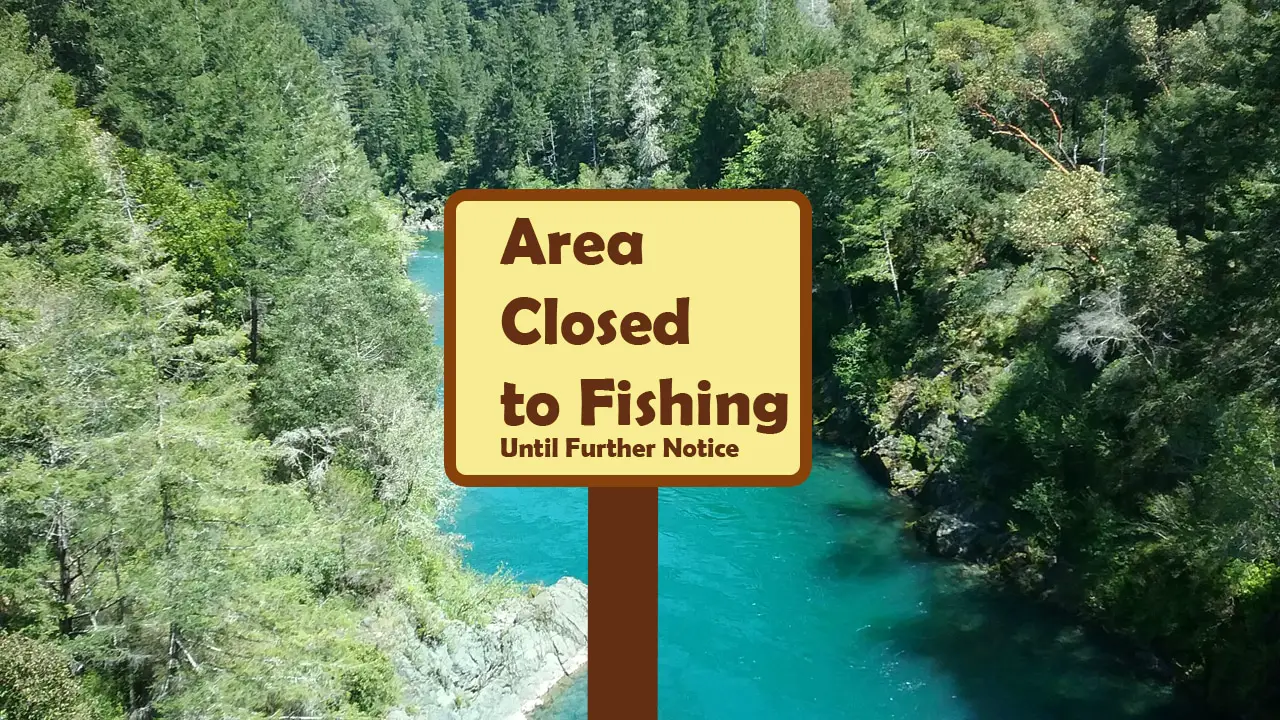 Lack of snow in some of the mountains of Western States could mean serious consequences for your fishing in the late summer and fall. Colorado, and parts of Idaho are two of the areas that are suffering some very light snowpack. Another area that needs more water are the river systems downstream of the Colorado mountains! By looking at the maps below, you’ll see that most of the Columbia river system area is going to be hit hard. Montana is one of the few bright spots and seems to be in pretty good shape for the coming fishing season. Keep reading below to see detailed maps of all of the critical areas.
Lack of snow in some of the mountains of Western States could mean serious consequences for your fishing in the late summer and fall. Colorado, and parts of Idaho are two of the areas that are suffering some very light snowpack. Another area that needs more water are the river systems downstream of the Colorado mountains! By looking at the maps below, you’ll see that most of the Columbia river system area is going to be hit hard. Montana is one of the few bright spots and seems to be in pretty good shape for the coming fishing season. Keep reading below to see detailed maps of all of the critical areas.
As the spring warmth arrives, the reservoirs fill up with melted snow. The deep water bodies usually will have a pretty steady flow of water coming into them until mid summer. On low snow pack years, the water flowing into the reservoirs becomes a trickle.
As late spring arrives and all of the snow is gone, the lower end of the reservoir is expelling more water than it has flowing into the upper end…. This will inevitably create a deficit. The farmers down river don’t care about your fishing, they need water flowing to them for crops. As the water body begins to get lower, the more shallow water begins to warm. By mid summer moss and algae begins to form in the sun baked, warmer than average water. As you cast around in the river downstream, it begins covering your flies and making fishing difficult. That might be a pain in the butt, however things are about to get worse….much worse.
“things are about to get worse….much worse”
As August arrives, the water begins warming, the trout become sluggish and inactive. You begin to notice that fishing is really starting to suck, every day. The fish that you do catch are skinny, and have no fight in them. Amazing amounts of insects cover the water, but there just don’t seem to be any fish in the river?!
2017-2018 Lack of Snow = Bad Fishing by August on Many Rivers
The story above will be a reality this year in many tailwater rivers. The lack of snow in the mountains has left ski resorts in a very bad way. This year is truly one of the worst on record in many mountain areas. If you are planning a fishing trip in a Western mountain state, I would strongly consider aligning your arrival dates to plan for this.
Colorado Has a Very Big Snow Shortage
Of all the mountain states, Colorado is the worst off, but when CO has a water shortage, it causes problems elsewhere. The Colorado river, Rio Grande, the San Juan etc. All rely on Mountain snowpack. Arizona, New Mexico and even Utah will feel the effects of this.

This following map really shows how bad this is. Look at all the red!
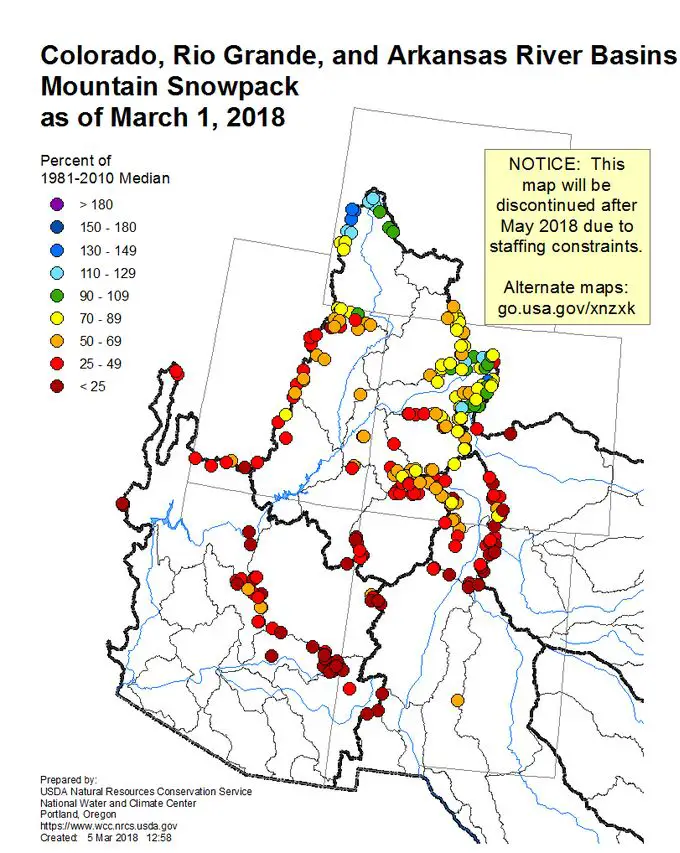
Montana is in Good Shape for 2018 Trout Fishing Season
As you can see below, MT has been blessed with a great amount of snowfall. If you had your heart set on fishing for trout in late summer and fall in this great state, you are all good! It will be a wet spring, so hopefully the heat comes slowly and it all doesn’t melt off too fast. MT could be a real mess in the early part of the season if it warms up too fast!

Idaho Fishing Forecast
Most of the state of Idaho is in decent shape. The northern sections are all at near regular snowpack levels or above. The main areas that are going to be problematic are in the Southern part of the state. Check out the red arrows in the map below. Some of those spots will affect many anglers this season.
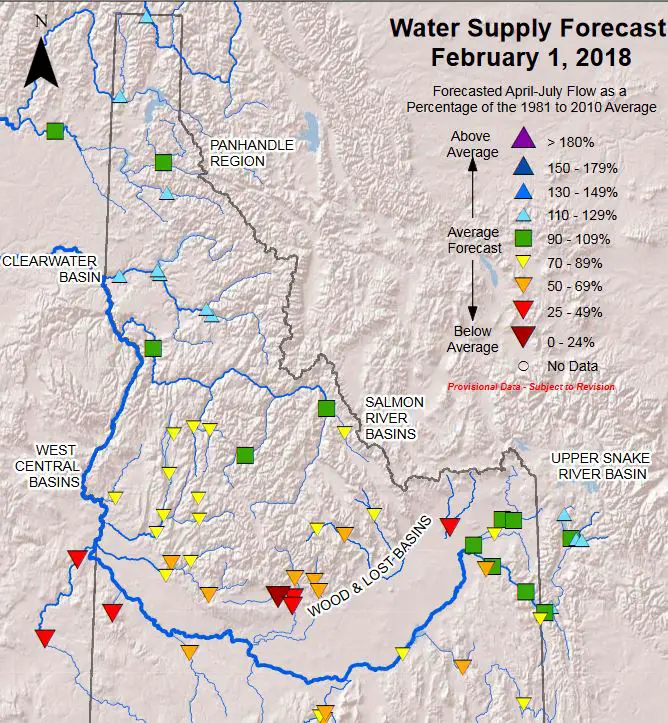
Washington – Columbia River Basin Area Map
Look out Washington and Oregon!
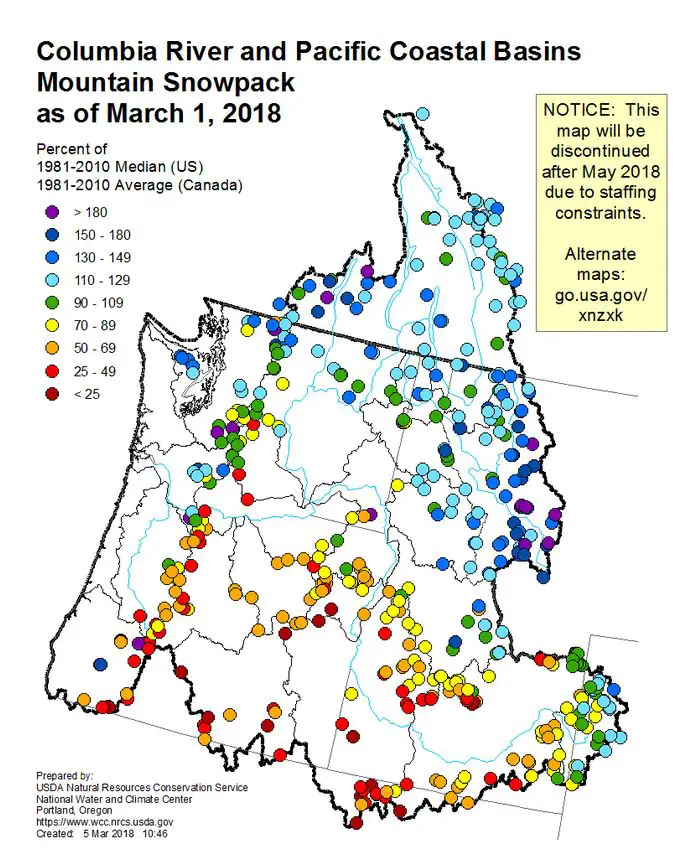
Just for the Heck of it, Here’s AK
Southern Alaska has an area that is popular for fishing that is in a very low water situation.
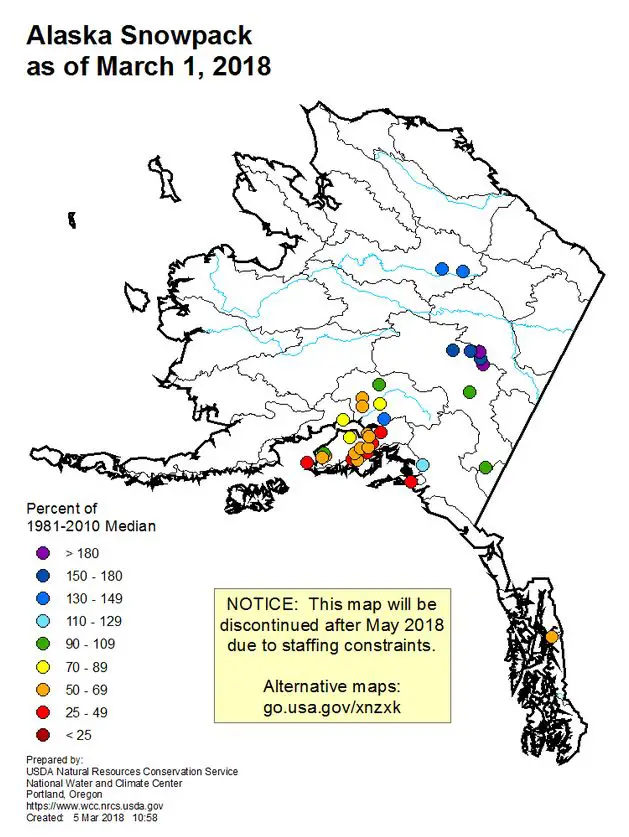
See here for more maps:https://www.wcc.nrcs.usda.gov/cgibin/westsnow.pl
What Can I Do To Ensure Good Fishing?
The first thing I’d do is make a plan to go fishing in early July or August and scrap those September plans. If you were planning for October, it might be cooling down by then, that should trigger the fish to liven up a bit. October fishing is usually a crap shoot anyway.
Much of this will only matter if you are fishing below a dam. If you are fishing in a spring creek, the water might be lower, but the temperatures will not change too drastically. If you have plans to fish a certain river, I would surely check the snow pack in that specific area and plan accordingly.
The Effects of Warm Water on Trout
There are many rivers in MT that will have restrictions where you can only fish certain hours of the day (link to an example),because of water temp changes. They will also close entire sections of river if the water warms too much. This is because the mortality rate of caught fish is terribly high in warm water. Trout require cool water to survive. When the water is warmer than they can bare they just sit there and try to survive, that’s why you can’t catch them.
Warmer water contains less oxygen than cool water. If thew fish move too much, they just can’t keep up with their oxygen needs. Now imagine an already stressed fish gets hooked by some angler who like to “get a good long fight” by using a 3 weight and light tippet. That fish will most likely die. Honestly, there becomes a point when the water temperature gets to a certain point, you should not even try fishing. It is borderline unethical (IMO) to fish for stressed trout in water over 60 degrees. The absolute maximum water temperature that trout can survive in will vary species by species. Generally brook trout require the coldest water, if the water gets over 65° degrees, they will be in tough shape. Brown trout, rainbow trout and cutthroat can survive in 70° water, but that doesn’t mean you should fish for them.
Things could possibly change if we have a very wet spring, but there is truly no way around it. This will be an epic low water year and fishing in the later part of the summer will not be as good as it often would be. You should be able to make plans to ensure good fishing in you start to make your plans now. Low snow fall amounts will have a negative effect on tailwater trout fishing in 2018. Plan for it.
